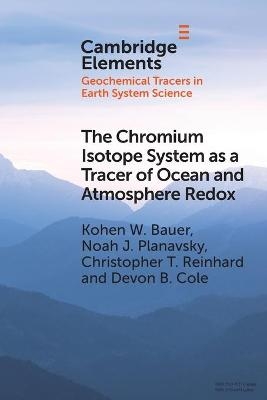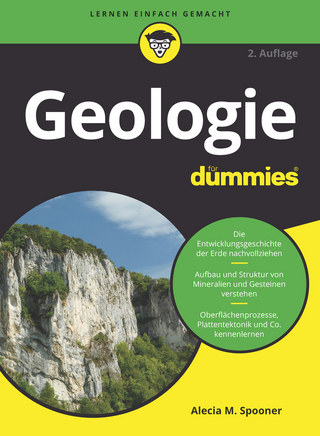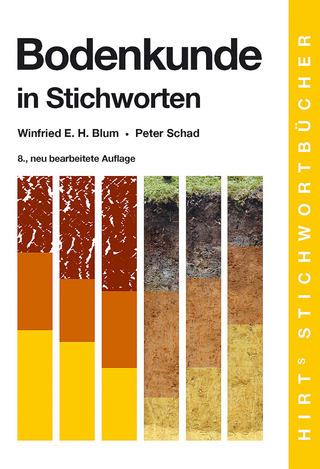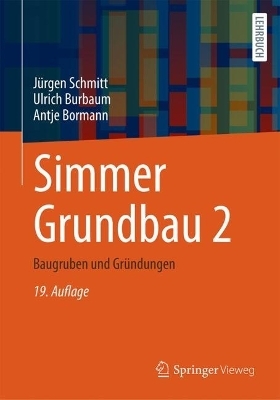
The Chromium Isotope System as a Tracer of Ocean and Atmosphere Redox
Seiten
2021
Cambridge University Press (Verlag)
978-1-108-79257-8 (ISBN)
Cambridge University Press (Verlag)
978-1-108-79257-8 (ISBN)
The stable chromium (Cr) isotope system has emerged over the past decade as a new tool to track changes in the amount of oxygen in earth's ocean-atmosphere system. Cr isotopic signatures can provide novel insights into Cr redox cycling in both marine and terrestrial settings.
The stable chromium (Cr) isotope system has emerged over the past decade as a new tool to track changes in the amount of oxygen in earth's ocean-atmosphere system. Much of the initial foundation for using Cr isotopes (δ53Cr) as a paleoredox proxy has required recent revision. However, the basic idea behind using Cr isotopes as redox tracers is straightforward—the largest isotope fractionations are redox-dependent and occur during partial reduction of Cr(VI). As such, Cr isotopic signatures can provide novel insights into Cr redox cycling in both marine and terrestrial settings. Critically, the Cr isotope system—unlike many other trace metal proxies—can respond to short-term redox perturbations (e.g., on timescales characteristic of Pleistocene glacial-interglacial cycles). The Cr isotope system can also be used to probe the earth's long-term atmospheric oxygenation, pointing towards low but likely dynamic oxygen levels for the majority of Earth's history.
The stable chromium (Cr) isotope system has emerged over the past decade as a new tool to track changes in the amount of oxygen in earth's ocean-atmosphere system. Much of the initial foundation for using Cr isotopes (δ53Cr) as a paleoredox proxy has required recent revision. However, the basic idea behind using Cr isotopes as redox tracers is straightforward—the largest isotope fractionations are redox-dependent and occur during partial reduction of Cr(VI). As such, Cr isotopic signatures can provide novel insights into Cr redox cycling in both marine and terrestrial settings. Critically, the Cr isotope system—unlike many other trace metal proxies—can respond to short-term redox perturbations (e.g., on timescales characteristic of Pleistocene glacial-interglacial cycles). The Cr isotope system can also be used to probe the earth's long-term atmospheric oxygenation, pointing towards low but likely dynamic oxygen levels for the majority of Earth's history.
1. Introduction; 2. Basics of Cr speciation and isotope fractionations; 3. A global Cr isotope mass balance?; 4. Seawater Cr isotope values; 5. The sedimentary Cr isotope record; 6. Summary and future directions.
| Erscheinungsdatum | 24.02.2021 |
|---|---|
| Reihe/Serie | Elements in Geochemical Tracers in Earth System Science |
| Zusatzinfo | Worked examples or Exercises |
| Verlagsort | Cambridge |
| Sprache | englisch |
| Maße | 230 x 150 mm |
| Gewicht | 67 g |
| Themenwelt | Naturwissenschaften ► Geowissenschaften ► Geologie |
| Naturwissenschaften ► Geowissenschaften ► Hydrologie / Ozeanografie | |
| Naturwissenschaften ► Geowissenschaften ► Meteorologie / Klimatologie | |
| ISBN-10 | 1-108-79257-X / 110879257X |
| ISBN-13 | 978-1-108-79257-8 / 9781108792578 |
| Zustand | Neuware |
| Informationen gemäß Produktsicherheitsverordnung (GPSR) | |
| Haben Sie eine Frage zum Produkt? |
Mehr entdecken
aus dem Bereich
aus dem Bereich
Baugruben und Gründungen
Buch | Hardcover (2024)
Springer Fachmedien Wiesbaden GmbH (Verlag)
59,99 €


